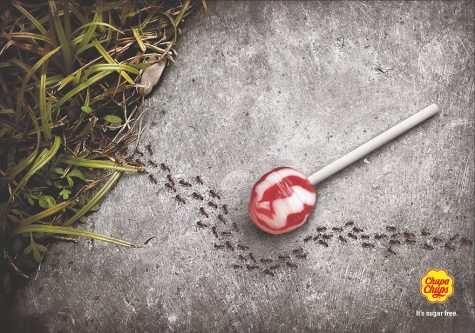Environmental woes: How skincare is polluting our seas
The cooling face wash rubs against my skin, removing all the dust and dirt that I imagine is creeping around the surface. It’s advertised as being refreshing and rejuvenating—and it does exactly that. Gentle exfoliating beads rub my dead skin off and lather away into rivulets of foam and water that spiral down the drain and out of my sight. But by this simple action, I have put countless marine lives in danger.
It is strange, almost an exaggeration, to think that I have added to environmental woes just by washing my face. But that is exactly what I have done, the fault being that I washed my face using a product that brandishes itself as having ‘microbeads’ in it. As invitingly luxurious as that sounds, a product with ‘microbeads’ in it is, in fact, terrible for our environment.
Microbeads are synonymous to microplastics. A microplastic is a piece of plastic that is five millimeters or smaller, with many being just a fraction of a millimeter. They are easy to spot because they look like plastic beads suspended in liquid. Many products, such as Clean & Clear’s Morning Burst Facial Scrub-Oil Free, the same brand’s Blackhead Eraser Facial Scrub, as well as in Neutrogena’s Fresh Foaming Scrub and The Body Shop’s Tea Tree Squeaky Clean scrub, are said to have ingredients that contain microplastics.
The only solution to this problem is for us to be aware of the kinds of products we are using and to make sure we eliminate microbeads and such plastic waste from our lives.
According to a recent study by Qatar University’s Environmental Science Centre, large amounts of plastic were found in Qatar’s coastline in 2015, with an average concentration of 0.71 particles per cubic meter of seawater. This makes it a health hazard for man and fish alike. Most of the plastic found were microplastic particles that easily pass through water filtration systems, given their minute size.
The study, published in July 2016 on the Marine Pollution Bulletin, showed that microplastics were present heavily in waters where pollution occurs due to human activity. This includes shipping operations, oil-rig installations and sewerage water disposal. In analyzing microplastics extracted from plankton-rich seawater, the study found the particles to be high in toxicity. While plastic is not a biodegradable product, it disintegrates in sea water, changing into micro, and often even smaller – nanoplastics.
“The more the microplastic disintegrates, the more it becomes like sponges, absorbing the toxic industrial waste of the water around them,” said Azenith Castillo, corresponding author of the study.
Once in the form of microplastic, this debris poses a serious threat to marine life. Due to its incredibly small size, the fish mistake it as plankton, i.e. fish-food, and eat this biohazard. This can potentially become very problematic.

According to Jeffrey Philip Obbard, the study’s lead author and researcher at Qatar University’s Environmental Science Center, when fish ingest the microplastics, they store it within their stomach. The acidity in the stomach detaches the toxins from their plastic particles, allowing them to get absorbed into the bloodstream and fat deposits. Eventually, humans catch these fish in their large nets and make seafood cuisines out of them.
“The physical impact on the digestive system can end up affecting the general health, often leading to people developing chronic illnesses,” said Obbard.
One particularly dangerous example, according to Obbard: When a new mother eats this fish, the toxins are absorbed into her breast milk, since it is high in fat content. The milk then becomes part-nutrition and part-poison for the baby.
This study of microplastics in the sea is the first of its kind in Qatar, highlighting the importance of preventing this problem before it gets out of hand. It states two main culprits for this issue of pollution. The first is plastic waste that is thrown into the ocean, either by individuals or by corporations. The second is microbeads, which are often present in cosmetic and skincare products. Many exfoliants, soaps and cosmetic products purposely contain microplastics which help in skincare.
“When you use these products in the shower, nearly 100,000 microplastic particles are discharged into the drain and that water goes into the sewage system and ultimately makes its way into the sea,” Castillo said.
The predictions for our plastic-filled oceans are bleak. In January 2016, the World Economic Forum reported that currently there is one unit weight of plastic for every five unit weights of fish in the oceans. By 2050, there would be more plastic than fish in the oceans.
“The only solution to this problem is for us to be aware of the kinds of products we are using and to make sure we eliminate microbeads and such plastic waste from our lives,” Castillo said.
To address this issue, governments have incorporated measures to ban products that contain these microbeads. Countries like United States and Canada have prohibited these products and the implementation of bans against them is currently underway. The United Kingdom has also pledged to ban products with microplastics by the end of 2017. The UK’s Department for Environment, Food & Rural Affairs has declared that the ban would be brought in for microplastics in “rinse-off” cosmetics and personal care products like toothpaste, face wash, and body wash.
But individual consumption and awareness also matters. Purchasing products from companies, that create microbead free products, such as Aveda, Boots and Burt’s Bees, among others, would be a good start. Other companies such as The Jojoba Company, Neal’s Yard Remedies, Trilogy and Tribe Skincare make their products free from all microplastics – in bead or non-bead form. Actively avoiding usage of brands that contain microplastics could be your first step to battling this problem.
For a list of plastic-free products, refer to: https://www.beatthemicrobead.org/product-lists/
With reporting by Racha El Ourradi.
















